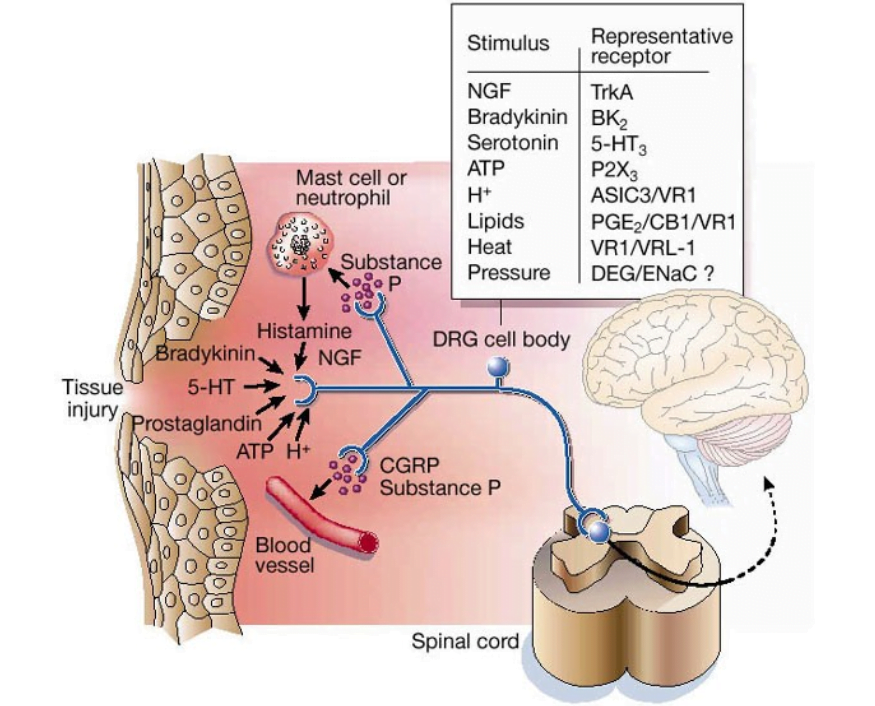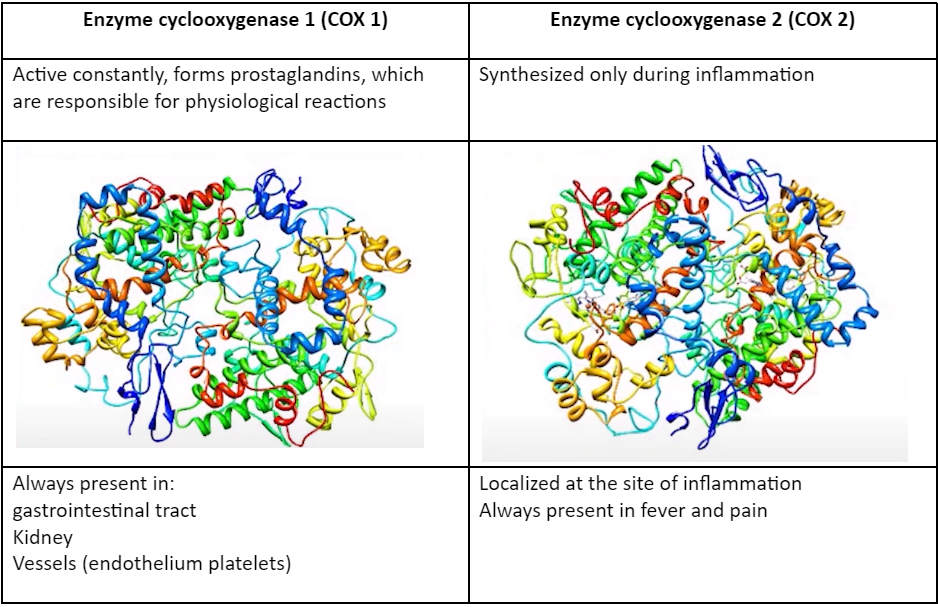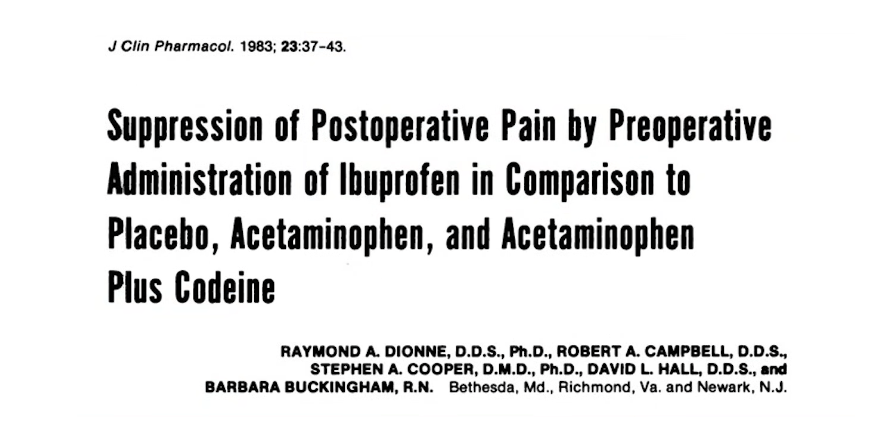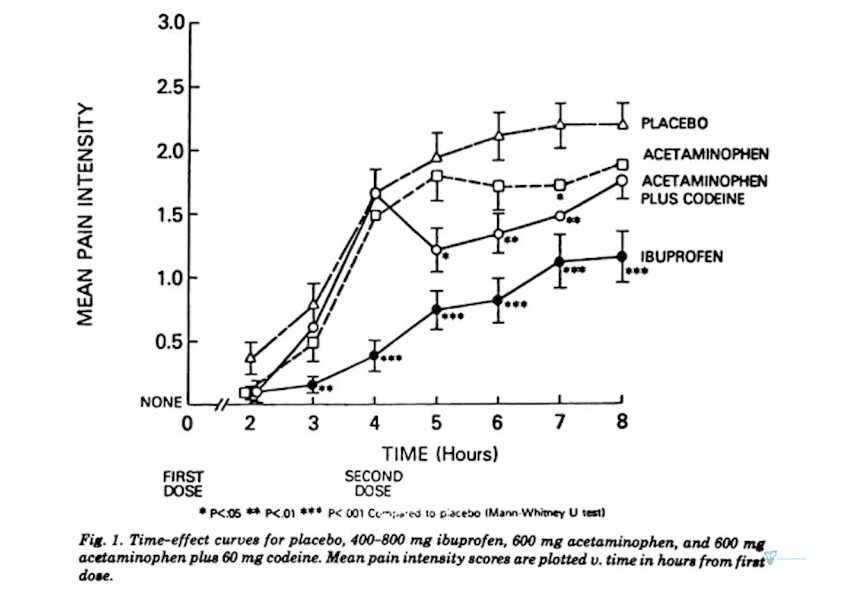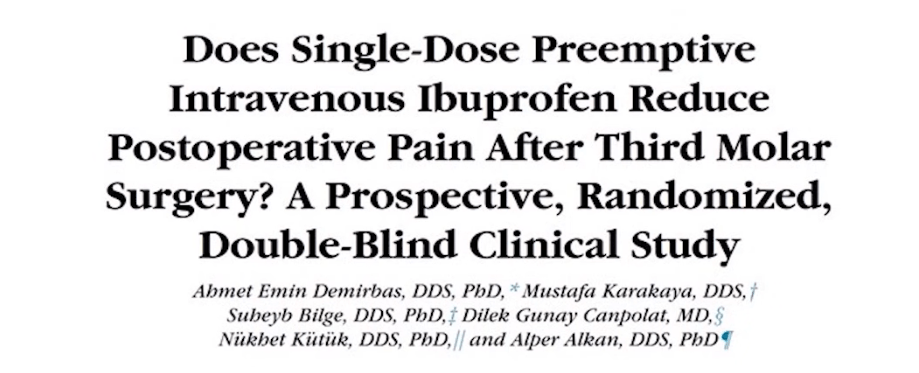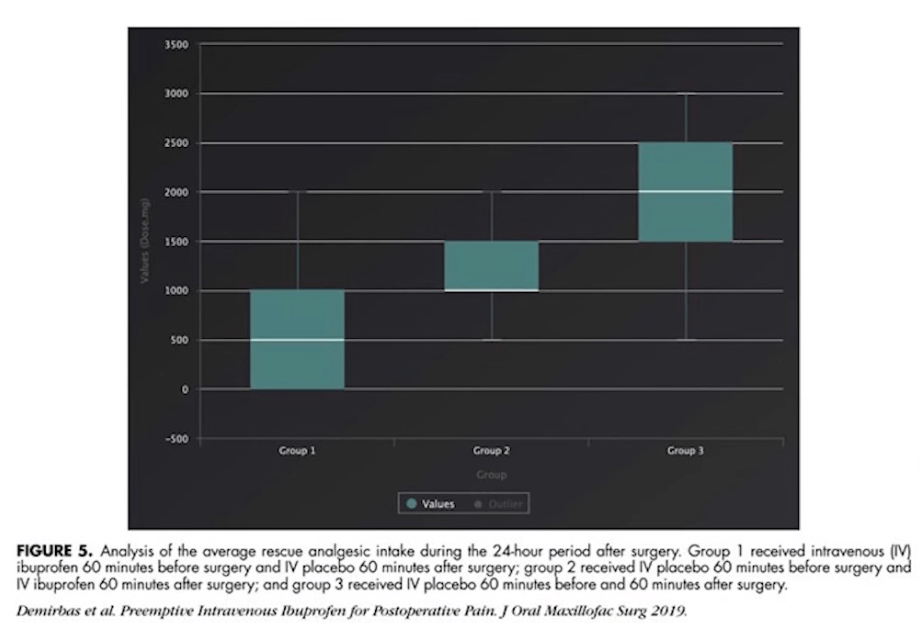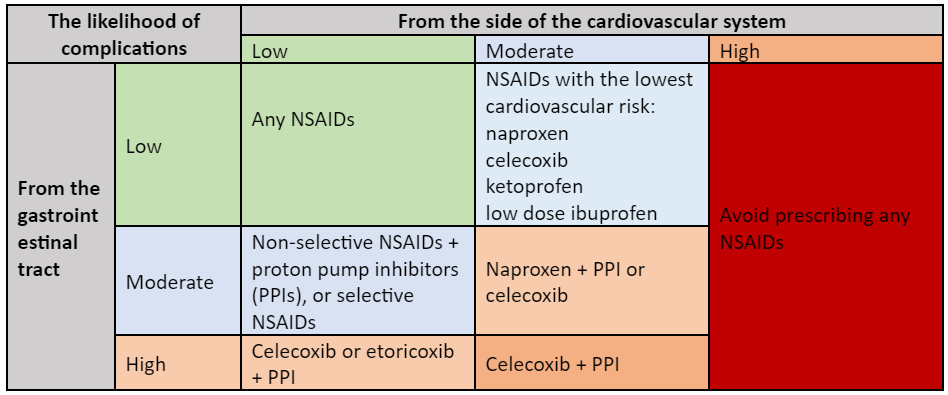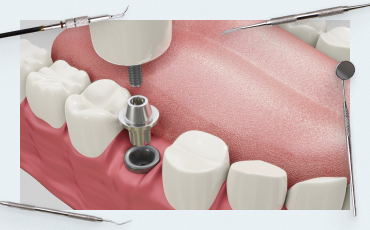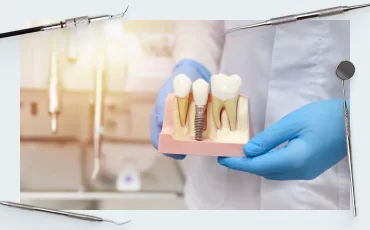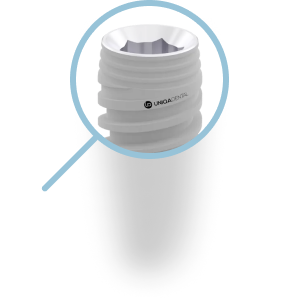
In this article, we will analyze the use of non-steroidal anti-inflammatory drugs that relieve pain during dental interventions. Moreover, the same drugs are used at the stage of preparation for surgical procedures, as well as to alleviate the condition of patients at the diagnostic stage. Despite the fact that pain performs the most important function, and as Hippocrates said: Pain is the guard dog of our body, there is no need to endure it when the cause is established. Moreover, when the patient seeks help, the cause of the exacerbation of the pain syndrome becomes surgical intervention. So you need to take measures to reduce discomfort. However, not all drugs are equally effective and safe, and they should be prescribed with great care because we are talking about high dosages.
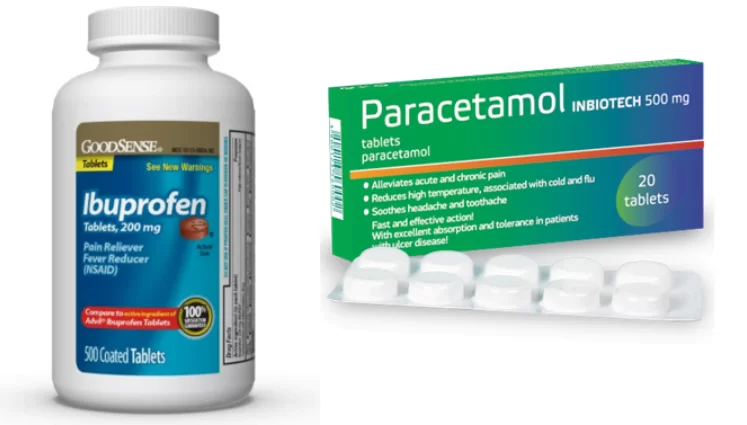
Differences between pain relief drugs – selective and non-selective non-steroidal anti-inflammatory drugs
Pain becomes pain only after the analysis of incoming signals by the brain. If the signal is weakened in any way, then the pain sensation will be reduced or blocked altogether.
The mechanism of pain transmission works through a network of nociceptive receptors that are present in almost all tissues of the body.
This means that you need to intervene in their work and turn off the signal or weaken it. You can do this in two ways:
- Apply local anesthesia – drugs of the articaine series completely turn off the conduction of nerve endings in a certain area. You can safely do any operation; the patient will not feel anything. However, the action of local anesthesia passes, but the injury remains.
- Apply anesthetics that reduce the level of response to pain. The signal is weakened or does not reach the brain and the patient feels well.
The vast majority of anesthetics have another property – anti-inflammatory. That is, they reduce the inflammatory response, and as a result they also have antipyretic properties.
All these properties are possessed by non-steroidal anti-inflammatory drugs, which are used not only in dentistry and are sold all over the world without a prescription. Moreover, drugs such as ibuprofen and aspirin are among the strategically important drugs on the WHO list. Their reserves must be provided at the state level, and they must be available even in the event of natural disasters and man-made disasters.
How anesthetics “work” at the biochemical and molecular level
Understanding how people feel pain: to activate and start a nerve impulse, a chemical effect on the nociceptive receptor is needed. This is usually due to bradykinin and histamine, which are called pain mediators. For the nerve receptor to become sensitive, prostaglandin must act on it, which, in turn begins to be synthesized due to the enzymes cyclooxygenase 1 and cyclooxygenase 2. See the table below:
It is important to understand how anti-inflammatory pain relievers work. A significant part of these drugs are non-selective and act on both types of cyclooxygenase, which is not very good. W we will analyze why that is. In addition, there are selective drugs that act only on cyclooxygenase 2.
Side effects of anesthetics
Cyclooxygenase 1 is an enzyme that is constantly involved in physiological processes and performs the most important functions. For example, in the gastrointestinal tract, cyclooxygenase 1 is involved in the synthesis of prostaglandin in the gastric and intestinal mucosa where it performs a protective function, preventing the destruction of the mucous membrane. For example, in the stomach, our own hydrochloric acid is a fairly strong damaging agent. It is cyclooxygenase 1 (COX 1) that allows you to save the mucous membrane. Non-steroidal anti-inflammatory drugs destroy the structure of cyclooxygenase 1. See the illustration below:
Not only hydrochloric acid, but also many components of bile and other enzymes negatively affect the mucous membranes of the intestines, kidneys and vascular membranes of the liver. Everywhere non-selective anti-inflammatory drugs inhibit COX 1 and thereby reduce mucosal protection. As a result, against the background of taking non-steroidal anti-inflammatory drugs in high dosages, peptic ulcer disease may worsen and internal bleeding may occur caused by damage to the mucous membranes. These are serious side effects. We will talk about how to counter them.
Cyclooxygenase 2 is also involved in some physiological processes, but in most tissues it is present in trace amounts and begins to be actively synthesized only as a reaction to injury or disease. The effect of anesthetics should be directed specifically at her. By inhibiting cyclooxygenase 2, the pain threshold can be significantly reduced without negative consequences for normal physiological processes.
Indeed, with the suppression of COX 2, the production of prostaglandin is also inhibited, which means that the sensitivity of the nociceptive receptor is blocked.
In the family of non-steroidal anti-inflammatory drugs there are names that are well known not only to specialists.
- First of all, these are analgesics (metamizole). This includes Analgin, Baralgin, Pentalgin and others. All of them are non-selective drugs. The maximum single dose is 1000 mg, daily 3000 mg.
- No less famous is ibuprofen, sold under the commercial names Nurofen, Brufen , Solpadex, etc. The maximum single dose is 200-600 mg, daily 2400 mg. When it is taken, both types of cyclooxygenase are also inhibited. Let us consider in more detail, since this drug is strategically important. In many studies it is designated as the gold standard in the treatment of acute or chronic pain.
- Ketorolac also refers to non-selective anti-inflammatory and anesthetics. It can be found under the names Ketorol, Ketanov, Dolak and others. The maximum daily dose is 10-30 mg, daily 90 mg. This drug is considered quite strong and is well known to both dentists and patients. This is well deserved, in the mid-90s when it first appeared, great hopes were placed on ketorolac because its effect in some cases was commensurate with opioid anesthetics.
Less well-known among patients, but well-known to doctors, are selective non-steroidal anti-inflammatory drugs:
- Celecoxib (Celebrex) – the maximum single dose is 200-400 mg, the daily dose is 400 mg.
- Etoricoxib (Arcoxia) – the maximum single dose of 60-90 mg, daily 120 mg
They selectively act on COX 2 and do not affect COX 1.
Another drug and its derivatives stand apart – this is Nimesulide. It belongs to moderately selective as even among clinical pharmacologists, there is no consensus to which group of selective or non-selective drugs it can be attributed. The maximum daily dose is 100-200 mg, daily 400 mg
In addition to those mentioned above, there is another drug that is well known to doctors and patients. It’s paracetamol. It was not included in any of the above classifications because it does not belong to the group of non-steroidal anti-inflammatory drugs. Paracetamol is a centrally acting pain reliever. There is still no consensus on the principle of action of paracetamol. The most popular view is that it acts on cyclooxygenase 2 in the brain, and does not act on other types of cyclooxygenase in the rest of the body.
This means that it does not have the side effects typical of non-steroidal anti-inflammatory drugs. That is why paracetamol is used for young children, pregnant women and patients who have contraindications for the use of NSAIDs.
The maximum daily dose is 500-1000 mg, daily 4000 mg. We must understand that paracetamol has only two actions compared to NSAIDs – it is an analgesic and antipyretic agent, but it does not have an anti-inflammatory effect. Paracetamol also has a weaker analgesic effect compared to all NSAIDs. The effectiveness of NSAIDs, assessed by the dynamics of WOMAC, was approximately 40% higher compared to paracetamol. Nevertheless, paracetamol is an effective drug that reduces temperature well and reduces pain.
Given the above, it is logical that doctors began to prescribe mixtures of drugs, and pharmaceutical companies began to produce drugs with a mixture of paracetamol and ibuprofen with the dosing regimen – ibuprofen 400 mg and paracetamol 1000 mg. There is still no consensus about the effectiveness of such a scheme, namely, enhancing the action of drugs. There are studies that support this, and there are studies that refute it. In any case, the combination of drugs has an analgesic effect, and there are fewer side effects compared to the practice of prescribing a higher dose of NSAIDs.
Management of pain in the perioperative period
Let’s figure out how effective non-steroidal anti-inflammatory drugs are in dental practice. If you turn to the clinical guidelines for the use of NSAIDs, it turns out that, among other indications, it is indicated that they are effective for:
- acute injuries and other conditions associated with damage or acute inflammatory processes (in particular, dental diseases); and
- pain sensations in the perioperative period (as a component of anesthesia).
The perioperative period covers the time before surgery, during surgery, and after surgery. This means that anesthetics should be prescribed not only after the operation, but also before it begins. Let’s deal with this in more detail.
When and how to prescribe anesthetics at a dental appointment
There is a well-done study from 2006, where colleagues studied the effectiveness of ibuprofen before surgery.
The result of this study was the recommendation to take a high single dose of ibuprofen 1 hour before injection of a local anesthetic in the treatment of patients with irreversible pulpitis and partial pulp necrosis. This scheme provides deeper anesthesia and a comfortable state for the patient.
In the study, the effect of three drugs and their combinations was studied:
- Ibuprofen pure;
- Paracetamol in combination with codeine (narcotic analgesic); and
- A placebo.
The selection of patients was also taken responsibly. Cases with exacerbated pulpitis were selected. More precisely, with necrotic pulpitis, as is known, it is under these conditions that patients experience the most severe debilitating pain. This is a completely correct approach, since the effectiveness of drugs should be evaluated against the background of a strong pain syndrome. Practicing dentists know that anesthesia for acute pulpitis is not an easy task, especially in the lower jaw.
As a result, it was found that ibuprofen works best with local anesthetics.
A more recent study from 2016 also included patients with acute conditions with irreversible pulpitis in the lower jaw.
In this study, patients were administered ketorolac. Patients were given a mandibular block to anesthetize the inferior alveolar nerve. Infiltration anesthesia was performed from the vestibular side and Ketorolac was injected along the transitional fold.
There was a control group, where a placebo was used instead of ketorolac.
As the degree of effectiveness, the degree of pain relief and the patient’s well-being was assessed.
As a result, it was found that the effectiveness of mandibular anesthesia was significantly higher in the ketorolac premedication group.
The results of the above studies can be criticized on the basis that they were only for pulpitis. Surgery for dental implant placement has a different pain pattern and it is not certain that the same protocol will work as for patients with pulpitis.
There is another study that is well-known among dentists. Although it is a rather old work from 1983, it has not lost its relevance in respect of the effectiveness of different drugs when compared in patients with the planned removal of impacted eights. Teeth were removed both upper and lower, and there was a breakdown into drug groups and there was a placebo control group.
Among the active drugs compared:
- ibuprofen;
- paracetamol; and
- paracetamol with codeine.
These drugs were given to patients before elective extractions, and ibuprofen was the leader among the drugs, see the graph below.
Pain intensity with ibuprofen was almost half that of paracetamol and markedly less than that of paracetamol plus codeine.
The conclusions of this study is that pre-treatment with non-steroidal anti-inflammatory drugs, such as ibuprofen, suppresses postoperative pain compared to standard therapy without increasing side effects.
Of course, there are more recent studies, for example, the following from 2019:
In this study, patients were given intravenous ibuprofen prior to elective G-8 removal.
Patients were followed up immediately after surgery and observed for 48 hours after surgery. The number of doses and dosage of anesthetics that the patient had to take during this period was assessed. The table below shows the dosages of drugs that had to be taken by patients from different groups.
The table shows that Group 1, where ibuprofen was used before surgery, required the lowest doses of pain medication in the postoperative period. Yes, 6-8 hours after the operation, the patients took some drugs, but the dosage required was lower compared to the other groups. Especially with Group 3, that received an injection of a placebo.
Let’s summarize and draw practical conclusions:
- All NSAIDs in adequate doses (average or maximum) have a commensurate analgesic effect.
- The effectiveness of NSAIDs is directly dependent on the dose. A pronounced analgesic effect is provided by high (close to maximum) doses of non-steroidal anti-inflammatory drugs.
- The use of injectable forms of drugs for intramuscular or intravenous administration, as well as water-soluble forms for oral administration, can accelerate the onset of the analgesic effect. At the same time, there is no clear evidence that the use of NSAIDs in the form of injections has an advantage over oral administration of tablets and capsules if the treatment is carried out for more than 24 hours.
- Non-steroidal anti-inflammatory drugs at medium and maximum therapeutic doses are more effective than paracetamol at the maximum dose (4000 mg / day).
The maximum daily and single doses for different types of anesthetics are indicated above this article, where we analyzed the most popular drugs. If you prescribe an appointment one hour before the use of local anesthesia, then it does not matter in what form the drug will be taken – tablets, capsules or injection.
How to deal with the side effects of anesthetics
Complications from the gastrointestinal tract
As we already know that the most common and well-studied complications are gastrointestinal problems. The main element of the pathogenesis of complications is the blocking of the enzyme (COX 1), which is typical for non-selective NSAIDs. As a result, there is a decrease in the synthesis of “cytoprotective” prostaglandins.
A decrease in the protective potential of the mucous membrane leads to its damage under the influence of external factors, such as hydrochloric acid in the stomach, bile acid enzymes, the vital activity of bacteria in the small and large intestines, etc.
As a result of taking NSAIDs, erosive changes and internal bleeding often occur. The mechanism we have already analyzed is that non-selective drugs inhibit both types of COX, and the wall of the intestine or stomach becomes more permeable to destructive factors.
If the patient already has problems, for example a stomach ulcer, then the risk of complications is very high.
The good news is that patients with erosion, gastric or duodenal ulcers are aware of their problems. So you can immediately take measures against possible complications.
That is, along with ibuprofen, take a proton pump inhibitor such as the well-known omeprazole.
The second option to reduce the risk of complications is to prescribe a selective NSAID to the patient, for example, from the group of coxibs (Celecoxib).
Fortunately, complications from the gastrointestinal tract in most cases appear only with long-term use of NSAIDs. The postoperative period in the case of dental operations is rarely long and the medication lasts from several days to several weeks, depending on the complexity of the surgical intervention and the individual characteristics of the patient. An exception may be operations on the lower jaw when removing the eighth teeth. In such cases, even with an ideal clinical picture, pain and the need to take NSAIDs persist for a long time. This means that you need to take care of protecting the patient’s gastrointestinal tract, even if he did not have problems such as a peptic ulcer.
Increased blood pressure due to NSAIDs
The second most important set of complications is the effect of NSAIDs on the cardiovascular system, namely the increase in blood pressure.
According to studies, taking NSAIDs is associated with a significant increase in the risk of developing arterial hypertension. Moreover, there was no significant difference between selective and non-selective NSAIDs.
The most significant negative effect on blood pressure was demonstrated by rofecoxib and etoricoxib.
High blood pressure during the operation will not allow the formation of a blood clot from which the healing process begins. This entails the risk of festering of the surgical wound, which will be very difficult to cope with, not to mention that high blood pressure and a general stressful situation can lead to a heart attack in patients with coronary heart disease and other diseases. Or even a stroke.
Under no circumstances should this be allowed. Therefore, it is imperative to collect an anamnesis on concomitant operations and consult with the patient’s doctor. It is possible that surgery is contraindicated for this patient at this stage.
If there are no direct contraindications, then it is imperative to measure the patient’s blood pressure before starting the operation. Indeed, in addition to the side effects of drugs, blood pressure can increase on an emotional background due to excitement before the operation. It is impossible to perform an operation on a patient with high blood pressure, it is necessary to stabilize blood pressure with drugs and only then prepare the patient for surgical intervention.
Based on clinical trials, the following recommendations for the use of NSAIDs have been developed:
- The lowest risk of complications from all parts of the gastrointestinal tract is observed with the drug Celecoxib. It is less likely to cause complications in patients at risk for the gastrointestinal tract than non-selective NSAIDs in combination with a proton pump inhibitor. Celecoxib has the lowest risk of developing gastrointestinal bleeding, ulcers, dispersions and IDA.
- Etoricoxib reduces the risk of developing dispersion and asymptomatic ulcers, but does not reduce the risk of gastrointestinal bleeding, including from the distal gastrointestinal tract.
- Aceclofenac, meloxicam, and nimesulide are less likely to cause dispersion and asymptomatic ulcers than other non-selective NSAIDs.
- Naproxen and celecoxib contribute less to the destabilization of arterial hypertension.
To facilitate the selection of drugs, look at the table below. It covers two types of complications, because it is not so rare that the same patient has problems both from the gastrointestinal tract and from the cardiovascular system. In the table, you can find different combinations, for example, there is a high risk of complications from the gastrointestinal tract, but not from the CCC, and vice versa, as well as intermediate combinations.
Violation of thrombus formation under the action of NSAIDs
Also, in the list of possible complications is the action of NSAIDs, which prevents normal thrombosis and thus increases the risk of bleeding. Fortunately, there is evidence and authoritative research that suggests that ibuprofen in particular is an effective pain reliever and its use is not associated with an increased risk of bleeding.
Ibuprofen is also prescribed for plastic surgery, and in traumatology and everywhere has shown a fairly high efficiency, without the risk of bleeding.
Allergy to anesthetics
It most often occurs in patients who have:
- Hypersensitivity to aspirin. As a rule, the patient knows about this and can warn in time.
- Disease of the upper respiratory tract – nasal polyposis.
- Disease of the lower respiratory tract – asthma.
In such patients, NSAIDs should be prescribed with great caution and only after consultation with the attending physician or allergist.
We hope the material in this article will be useful for your practice. Until next post!

